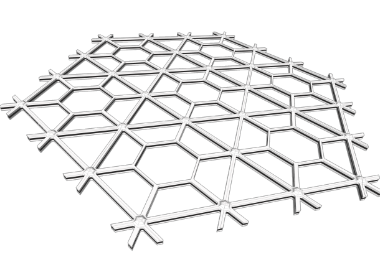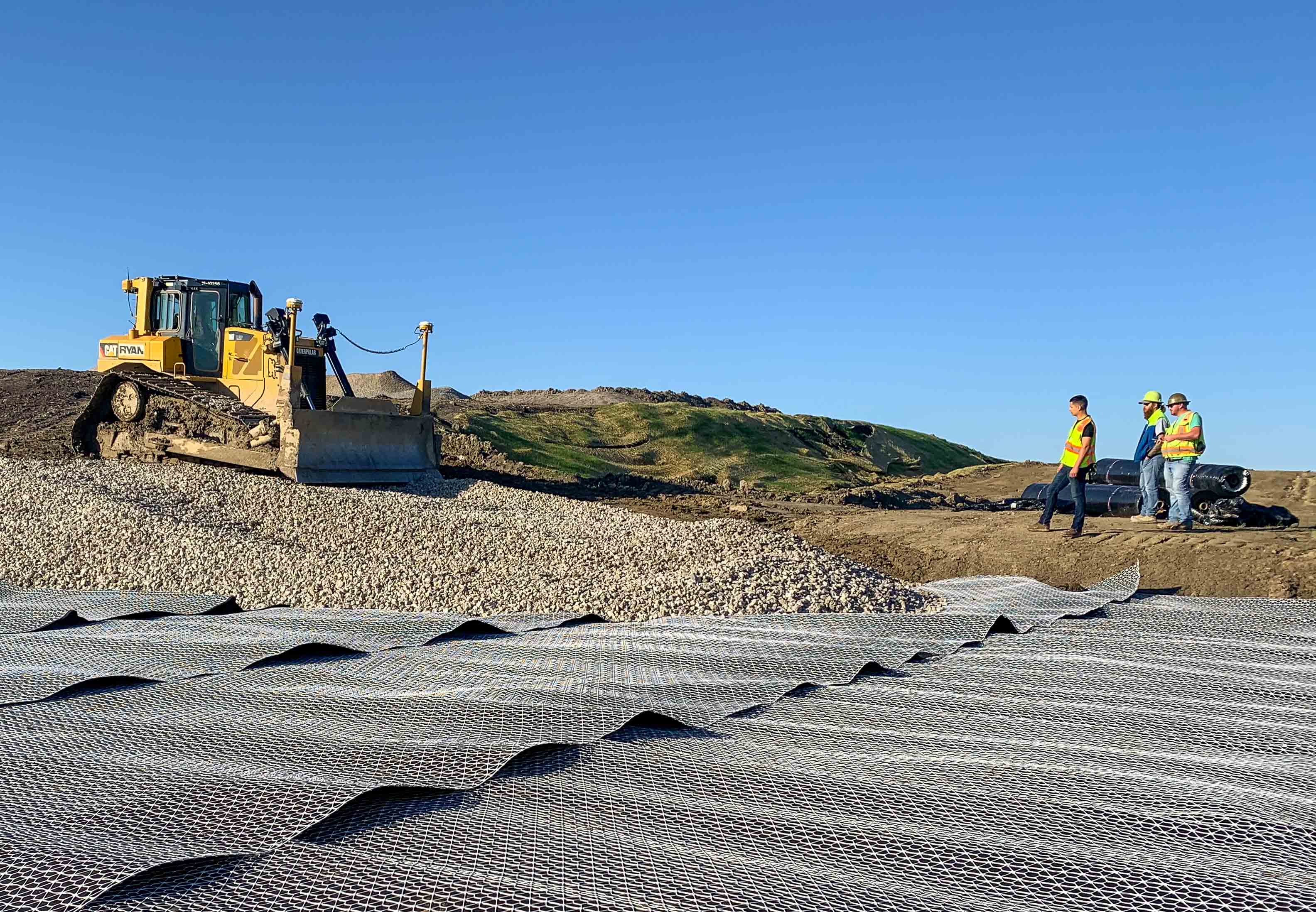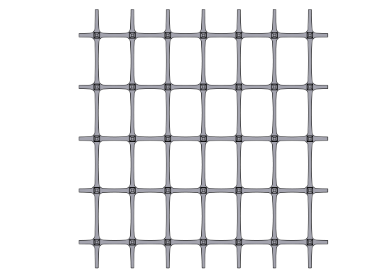
- Biaxial and multi-axial geogrids provide stabilization and filtration.
- Uniaxial geogrids provide reinforcement.
What Are Geogrids?
Geogrid Solution Overview
Before we define what a geogrid is, let's take a look at the larger category of geosynthetics. A geosynthetic is a synthetic product, usually made from or including polymeric materials, that is used to solve civil and geotechnical engineering problems in or on the ground. Geosynthetics add to or enhance the functions of conventional materials to make construction more efficient, cost-effective, and reliable. Designs using geosynthetics should be based on the function(s) of the selected materials to meet the engineering objective(s).
Geogrids were invented by Tensar in the late 1970s and are a category of geosynthetic material that can be used to provide the functions of reinforcement, stabilization, and filtration.
Geogrids Products & Systems
There are no results that match your search. Please try another search or Contact Us with further questions.
How Do Geogrids Function?
Geogrids have openings, called apertures, which allow aggregate to strike through and provide confinement and interlock.
All Geosynthetics Are Not Created Equal
Tensar geogrids have been tested extensively to ensure long-term performance and value.
Your reputation is at stake any time your stamp is used on a design. At Tensar, we don't take this lightly. That's why we have invested extensively in research and testing for all of our geogrid applications, proving their design and performance parameters time and again. You can use your stamp with confidence every time Tensar geogrids are specified in a design. Don't risk using products with unproven technologies.
Comparing Geogrids
There are dozens of geogrids and other geosynthetic products on the market. How do you know which is right for your project's needs? When it comes to roadway construction, the keys are proper design and testing to validate performance.
What Are Geogrids Used for? Stabilization / Filtration vs. Reinforcement
Biaxial and multi-axial geogrids provide the functions of stabilization and filtration (think roadbeds or foundational support). Uniaxial geogrids provide the function of reinforcement (think walls and slopes).
A Resilient Solution
Tensar geogrids are 100% UV resistant and will not rust, leach, or degrade in direct sunlight. When you build with geogrids, you can count on a higher-performing and longer-lasting solution for future generations to enjoy.
Trenching with Geogrid
Tensar geogrids are routinely excavated through and punched through in order to place guardrail posts, bridge piers, and underground utilities.
Free-Draining Separation Barrier
Testing and experience have shown that Tensar geogrids support the function of separation when properly graded aggregate fill is used. Geogrids are not prone to "blinding out" or clogging, which may occur with a geotextile used as a separation layer.
Design with confidence, from anywhere.
- Design & evaluate pavement and gravel sections, working platforms, sub-ballast sections & more
- Easily compare alternative materials
- Determine initial and lifecycle cost savings, time savings, and sustainability metrics
- High-level summary of the design alternatives for project stakeholders
- Sharing features that aid collaboration

Resources
Future Focused Roads: Enhance Performance with Design & Data
Duration: 1 hour // 1PDH CreditIn this webinar we discuss:Factors that influence pavement performanceConstruction techniques for new construction and...Road Construction: Pavement Types, Methods, and Designs
Shallow Utilities and Soil Stabilization Challenges
Contractors and engineers often face the tricky task of stabilizing subgrade soils around shallow utilities like water lines, gas pipes, or electrical...Your Regional Sales Manager
Your Inside Sales Manager
Your Local Distributor
There are no results that match your search. Please try another search or Contact Us with further questions.










.png)